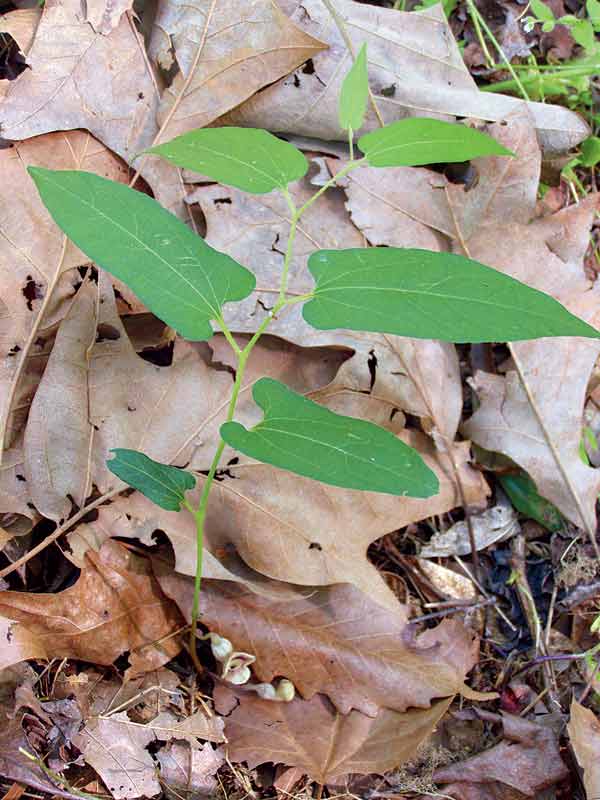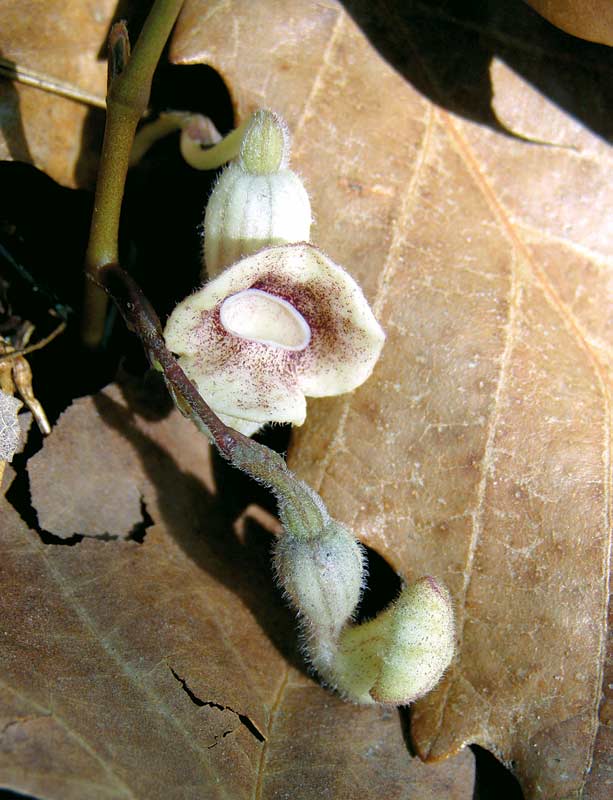By Ken Moore
 It’s just beginning to flower, so you have a week or two to go walking with “a closer look†to find it along wood’s edge, a stream bank, in piney woods or deciduous forests – it doesn’t seem to matter. What does matter is that you keep a keen eye along the path edges for this little plant that I’ve never observed standing more than eight inches above the ground – the snakeroot.
It’s just beginning to flower, so you have a week or two to go walking with “a closer look†to find it along wood’s edge, a stream bank, in piney woods or deciduous forests – it doesn’t seem to matter. What does matter is that you keep a keen eye along the path edges for this little plant that I’ve never observed standing more than eight inches above the ground – the snakeroot.
The smallish plant’s zig-zag stem, usually leaning to one side, has four to eight narrow, arrow-shaped leaves. The leaves are a little over an inch to three and a half inches long with a distinctive tapering point and a broad heart-shape base. It is distinctive; once you spot it, you’ll most likely not forget it.
 To find the flower, you’ll have to drop down on hands and knees, another “belly botany†opportunity. Just ignore other folks on the trail, at least until you find the flower to share with them. A small hand magnifier will be really useful. Look closely at the very base of the stem. The little flower may be hidden under the leaf litter.
To find the flower, you’ll have to drop down on hands and knees, another “belly botany†opportunity. Just ignore other folks on the trail, at least until you find the flower to share with them. A small hand magnifier will be really useful. Look closely at the very base of the stem. The little flower may be hidden under the leaf litter.
If you don’t spot the flower, be very careful in pulling back the litter. The flower is on a fragile thread-like peduncle. The flower, if open, looks a bit like Sherlock Holmes’ distinctive pipe. You are more likely familiar with the common Dutchman’s Pipe, Aristolochia macrophylla, flowers hanging on those big heart-shaped leafy vines of the mountain forests.
The name of this hugging-the-ground little pipe version is Aristolochia serpentaria, which goes by lots of common names. There are snakeroot, Virginia Snakeroot, Sampson’s Snakeroot, Diamondback Rattlesnake Root, Turpentine-root, Birthwort and Pelican Flower, among others from which you can choose.
Numerous herbal plant references describe various preparations of plant parts to treat snakebite wounds and fevers.
There are countless other formulas for just about every imaginable injury and ailment.
There’s a humorous account of Snakeroot in Paul Green’s Plant Book:
“There’s a common belief that the Virginia variety, which also grows in the Valley, is especially good for increasing man’s sexual powers. I know of one case where the man and his wife were married several years and snakeroot was recommended by an old neighbor. The man ate great quantities of it. In fact, he said, ‘I’ve et so much of that stuff I plumb foam at the mouth.’ Anyway, his wife had twins born to her, and so they never tired of recommending this to their friends.â€
Paul Green adapted this tale into his play The Founders.
It is noteworthy that all of the descriptions of these herbal remedies warn that because of the plant’s poisonous qualities, great caution must accompany use. So don’t even think of trying any of these remedies! But do enjoy going out in search for this unusual plant. Just to see it!
Include young people on your walk. Show them the picture of the leaves. They are more likely than adults to discover the plant. Don’t forget a magnifier for that close-up view.

is there snake root in the eastern part of west virginia?